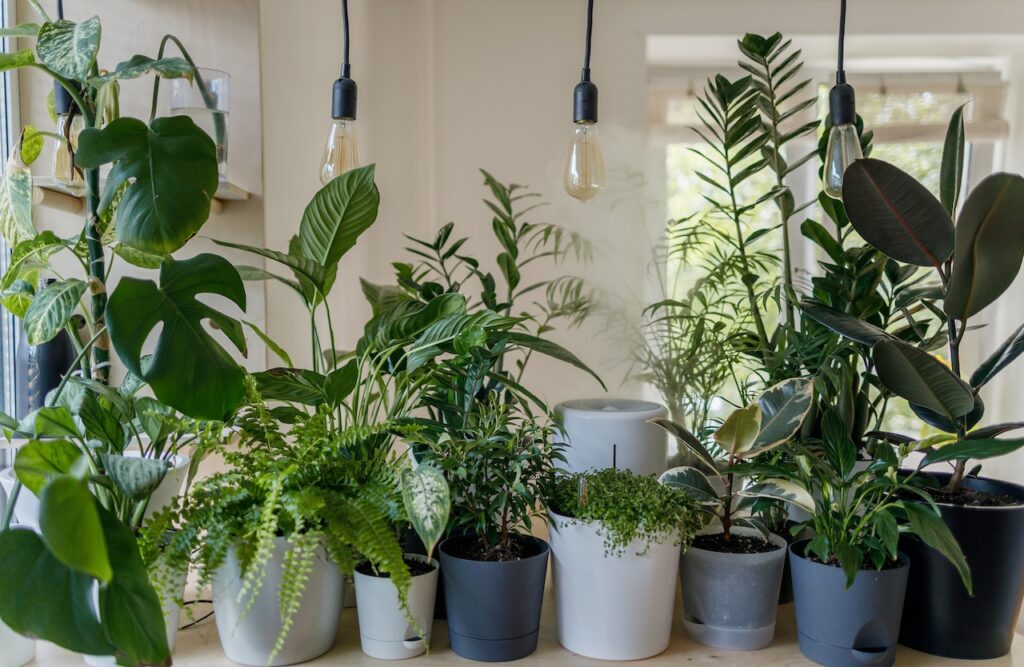
Do you dread coming home at the end of your work day to find wilted plants? Are you starting to lose your green thumb? Do you feel that you simply don’t have the time to nurture your houseplants?
There’s no need to despair! With a few easy tips, you can ensure that the plants in your home have the best chance of survival. The perfect home for you, your family, and your career.
Implement this plant care guide today and get started on your plant care journey. Read on!
How to Water Your Plants
When you do water them, make sure to give them a deep watering so the water really soaks in and reaches the roots. Depending on the size of your plant and the pot it’s in, you’ll want to water it anywhere from once a week to once a month.
If the leaves start to droop, that means the plant is telling you it needs water. Don’t let your plants sit in water, especially in a saucer, as this can rot the roots.
And if you’re going on vacation, ask a neighbor to water your plants for you or move them to a spot where they will get enough natural rainwater. With just a little bit of effort, you can keep your plants happy and healthy.
When to Fertilize Your Plants
No one wants to spend all their time caring for their plants, but sometimes it seems like that’s all we ever do! If you’re a busy caretaker, here’s a simple guide to help you keep your plants healthy.
When it comes to fertilizing your plants, the most important thing is to give them the nutrients they need when they need them. This can vary depending on the type of plant, but generally, you should fertilize your plants once a month.
If you’re not sure when to fertilize, consult a plant care guide or your local nursery. Giving your plants the nutrients they need will help them to grow strong and stay healthy, so taking the time to fertilize them regularly is well worth it.
The Best Type of Pots for Your Plants
When it comes to pots, there are a few things to keep in mind. Make sure the pot has drainage holes in the bottom. This is essential for preventing your plants from becoming waterlogged and stressed.
Choose a pot that is the right size for your plant. A pot that is too big can be difficult to manage, while a pot that is too small can limit the plant’s growth.
Once you’ve found the perfect pot, it’s time to start potting your plants! Be sure to use a quality potting mix and follow the instructions on the package. With a little love and care, your plants will thrive in no time.
How to Transfer Your Plants
If you’re like most busy people, you probably don’t have a lot of time to care for your plants. But don’t worry, there are a few simple things you can do to keep your outdoor plant healthy.
Make sure you’re transferring your plants to the appropriate pot size Once you’ve found the perfect pot size, make sure you’re using the right type of soil. Different plants require different types of soil, so it’s important to do your research before you transfer your plant.
Also, make sure you’re giving your plant the right amount of water. Over-watering can lead to root rot, while under-watering can cause the plant to wilt and die.
How to Get Rid of Pesky Plant Pests
If you’re a busy person who doesn’t have a lot of time to take care of your plants, this guide is for you! We’ll show you how to get rid of plant pests quickly and easily, so you can keep your plants healthy and looking great.
Identify the type of pest you’re dealing with. Is it an insect, such as an aphid or whitefly? Or is it a disease, such as powdery mildew or black spot? Once you know what you’re dealing with, you can take the appropriate steps to get rid of it.
If you’re dealing with an insect pest, the best way to get rid of it is to use insecticidal soap or organic pesticide. These products will kill the pests without harming your plants. Be sure to follow the directions on the label carefully.
If you’re dealing with a disease, you’ll need to treat it with a fungicide. Again, be sure to follow the directions on the label carefully. You may need to treat your plants more than once to completely get rid of the disease.
The Best Soil for Your Plants
If you don’t have time to fertilize your plants every week, you can use a slow-release fertilizer that will last for several months.
When choosing a fertilizer, be sure to select one that is appropriate for the type of plant you are growing. You can also hire a maintenance scaffolding specialist that can fix plant equipment for the mining, construction, oil, and gas industries.
You can also choose to use compost to fertilize your plants. Simply add a layer of compost to the top of the soil once a month.
Learn More About Plant Care Guide Now
If you are looking for a plant care guide that is simple and easy to understand, then this is for you.
This guide will teach you how to properly care for your plants so that they can thrive and stay healthy. You will learn about the different types of pots for plants and what they need in order to survive.
This guide is perfect for busy caretakers who want to learn more about plant care, but don’t have a lot of time to invest in it.
Did you find this article helpful? Visit more of our blogs!





